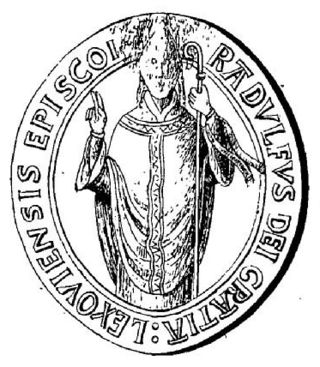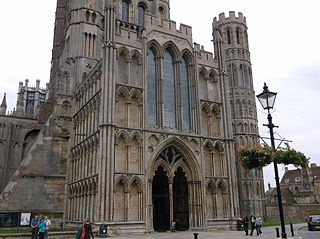Related Research Articles
Maurice was the third Lord Chancellor and Lord Keeper of England, as well as Bishop of London.

Ralph de Warneville was the twentieth Lord Chancellor of England as well as later Bishop of Lisieux in Normandy.

Eustace was the twenty-third Lord Chancellor of England, from 1197 to 1198. He was also Dean of Salisbury and Bishop of Ely.
Henry Wingham was a Lord Chancellor of England and Bishop of London.
Henry of Newark was a medieval Archbishop of York.
William Chillenden, also known as Adam of Chillenden, was a monk at Christ Church Priory, Canterbury, and treasurer of that priory when he was elected Prior of Christ Church in 1263.
Roger Niger was a thirteenth-century cleric who became Bishop of London. He is also known as Saint Roger of Beeleigh.
William Langton was a medieval English priest and nephew of Archbishop Walter de Gray. William was selected but never consecrated as Archbishop of York and Bishop of Carlisle.
William of Bitton was a medieval English Bishop of Bath and Wells.
William of Bitton was a medieval Bishop of Bath and Wells.
John Climping was a medieval Bishop of Chichester.

Gilbert de St Leonard was a medieval Bishop of Chichester.

William of Louth, also known as William de Luda was a medieval Bishop of Ely.
Henry of Lexington was a medieval Bishop of Lincoln.
Richard of Gravesend was a medieval Bishop of Lincoln.
Oliver Sutton was a medieval Bishop of Lincoln, in England.
Robert de Sigello was a medieval Bishop of London and Lord Chancellor of England.
Henry of Sandwich was a medieval Bishop of London.
Richard Gravesend was a medieval Bishop of London.
Fulke Lovell was a medieval Bishop of London-elect.
References
- Fryde, E. B.; Greenway, D. E.; Porter, S.; Roy, I. (1996). Handbook of British Chronology (Third revised ed.). Cambridge: Cambridge University Press. ISBN 0-521-56350-X.
- Greenway, Diana E. (1968). "Archdeacons: London". Fasti Ecclesiae Anglicanae 1066–1300. Vol. 1, St Paul's, London. Institute of Historical Research. Retrieved 29 October 2007.
- Greenway, Diana E. (1968). "Bishops". Fasti Ecclesiae Anglicanae 1066–1300. Vol. 1, St Paul's, London. Institute of Historical Research. Retrieved 29 October 2007.
- Greenway, Diana E. (1968). "Deans". Fasti Ecclesiae Anglicanae 1066–1300. Vol. 1, St Paul's, London. Institute of Historical Research. Retrieved 29 October 2007.

